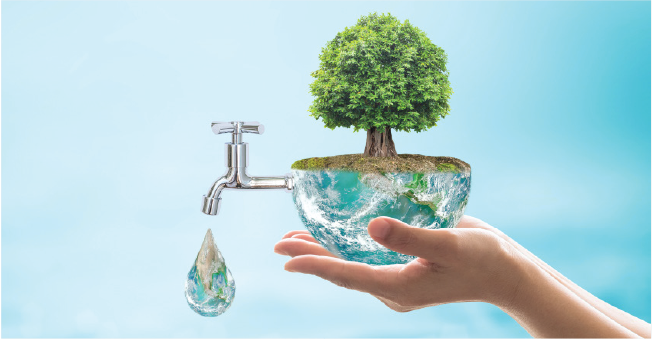We acknowledge the significance of water as a growing worldwide concern and the effects that its usage has on our business endeavours. As a result, we are synchronising our activities with calibrated measures to minimise our water footprint as well as maximise water recycling and reuse to optimise our freshwater consumption.
While our operations consume a minimal amount of water and do not entail direct water withdrawal, we regard water conservation as a critical aspect and have taken measures to that end throughout our facilities. Since many of our international operations facilities are on a lease, we consider water as a material issue for our Indian operations only.
Periodic Water Risk Assessment exercise which helps us to improve our internal processes and facilitates the identification of inefficiencies in water use or distribution system.
Generate monthly water management reports & reviews.
Consumption monitoring through automated system
Regularly check water lines and arrest any leakages.
Internal stakeholder awareness training and capacity building.
Rainwater harvesting fixtures.
Avoidance of Ground water usage
Determine the share of freshwater and reused water
Regularly check water lines and arrest any leakages.
Undertake preventive maintenance.
Installation of IoT water metres
Though our operations are not water intensive and rely on third-party sources, we regularly conduct Water Risk Assessments to optimise our internal processes and identify inefficiencies in our water use. We revisited our assessment for major facilities in FY 20-21, which led to the implementation of conservation targets and improved recycling measures at critical sites. Additionally, an external consultant helped conduct a Water Gap Assessment to identify management gaps and establish a long-term water reduction target. As a result, we have set a goal to decrease water consumption by 20% by FY 2030, with an ultimate ambition of achieving water positivity.
Reduction in water consumption in FY 2023 w.r.t. FY 2020

Our primary sources of water comprise municipal supply, accounting for 80% of our supply, and purchased water through tankers, representing 19% of our supply. The bulk of our water consumption is directed towards domestic utilities, including housekeeping, flushing and gardening, as well as HVAC systems that support cooling equipment.
Water consumed in FY 2023
Wastewater generated from these activities is either treated on-site, where feasible, or discharged into authorised municipal drains. We do not discharge any wastewater in the water bodies and surrounding land areas. To ensure this, we have installed wastewater treatment plants at our facilities where the wastewater generated is treated through Sewage Treatment Plants (STP) and recycled for other domestic applications, such as gardening and water sprinkling, and so on. The treated water is also tested before using for low end domestic applications as per CPCB prescribed standards for Class E. For sites where STP installation is not feasible, wastewater is discharged to the municipal drains after complying with all regulatory requirements.* In FY 2023, the total amount of wastewater generated was 1,69,298.00 KL and sent to municipal drain was 1,29,873.00 KL.#
Through the implementation of technology and our 3R strategy, we remain committed to reducing our water footprint. Also, we have incorporated automation and installed water metres across our facilities to reduce water leakage and improve tracking. In the reporting year, we achieved 11% reduction compared to FY 2020
A substantial amount of the total water used in our operations is recycled in our wastewater treatment plants. We are exploring avenues to enhance our recycling capacity. Moreover, we have conducted a feasibility assessment for rainwater harvesting fixtures in six facilities and implemented them in two facilities adding rainwater harvesting capacity of 2,128 kL. Additionally, groundwater recharge potential of 3,384 kL has been added along with the rainwater harvesting projects.
Wastewater recycled

In Bangalore, the implementation of an improved rainwater harvesting (RWH) system has been initiated to address the water scarcity issues. The enhanced RWH system features an expanded catchment area, advanced filtration process, and increased storage capacity, reducing the reliance on tanker waters and imported water. This sustainable solution not only promotes water conservation, but also helps save on water bills. By efficiently harnessing rainwater, we improved groundwater recharge, reduced soil erosion, storm water runoff, flooding and minimised the pollution of surface water.
of rainwater harvesting potential
of cost savings